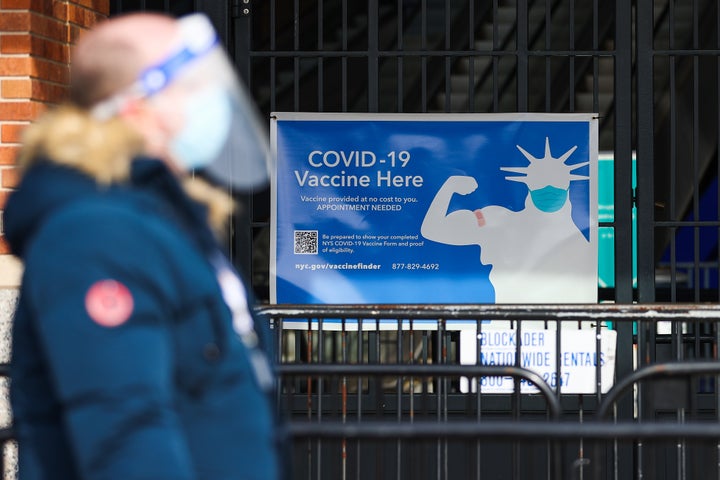The Biden administration announced Thursday that it will spend $10 billion to get COVID-19 shots to low-income communities where the pandemic has hit the hardest but the pace of vaccination has lagged.
The money is going to come from the American Rescue Plan, the $1.9 trillion COVID-19 relief program that the Democratic Congress passed and President Joe Biden signed earlier this month. Under the law’s directives, the federal government is supposed to pay close attention to traditionally underserved segments of the population.
There’s a good reason for that. Poor people and people of color are dying at disproportionately high rates, probably because many are essential workers, live in crowded housing and have underlying medical conditions. All of those are risk factors for COVID-19.
The data on who is getting shots is a bit sketchy because of gaps in reporting by the states. But the racial pattern is clear and consistent. Among 39 states that the Henry J. Kaiser Family Foundation analyzed, 19% of whites had gotten vaccinated as of March 15, compared with just 11% of Blacks and 9% of Latinos.
One reason for the disparities is the familiar inequity of American medicine and American society more generally. Especially in the early phases of the vaccine rollout, the people most likely to get inoculated were those who could spend time online making appointments and who had easy access to vaccination sites. Anybody without good internet access, transportation and a flexible work schedule was at a disadvantage.
Some state officials have made addressing these disparities a priority from the get-go, and, since taking over in January, the Biden administration has, too ― by, for example, setting up mass vaccination clinics at sports stadiums that are in or near low-income communities.

Another focus of the Biden administration has been Federally Qualified Health Clinics. Those clinics, which serve anybody regardless of insurance status or ability to pay, are the primary source of care for nearly 30 million low-income Americans every year. One of the Biden administration’s first moves, back in February, was to ship vaccines directly to these clinics.
Now the administration will be sending the clinics money: $6 billion, the single biggest allocation from Thursday’s spending directive, according to a briefing paper provided to reporters. Clinics can use the money to increase capacity for coronavirus testing and vaccinations, or to increase medical services for people at higher risk of contracting COVID-19. In practice, that will frequently mean adding staff or physical infrastructure, including mobile units.
“Increasing availability of COVID-19 vaccines through community health centers may be particularly helpful for vaccinating people of color and could help address some of the racial disparities in COVID-19 vaccination that have emerged,” Samantha Artiga, vice president at the Kaiser Foundation and director of its Racial Equity and Health Policy Program, told HuffPost.
“Early data show that health centers appear to be doing a better job of reaching people of color than overall vaccination efforts,” Artiga added.
The other big tranche of new spending will go to states, territories and some large cities so that they can fund community organizations that deal directly with low-income populations.
Examples of these groups, according to the administration’s briefing material, include a “rural, faith-based organization” and “a food assistance and housing non-profit.” (An organization like Meals on Wheels would seem like a natural candidate.) Their goals would be to educate people about vaccines, to help them make appointments and, eventually, to get them to the vaccine providers if they need help.
Maybe the most innovative part of Thursday’s announcement is a new federal partnership with dialysis clinics so that they can administer shots.
Dialysis patients are more likely to be people of color and, by definition, they have an underlying health condition that puts them at greater risk of severe disease or death from COVID-19. They also need dialysis on a regular basis, usually three times a week, and when that happens they will already be getting medical care from licensed professionals. Adding a vaccine to a day’s regimen shouldn’t cause a burden.
A HuffPost Guide To Coronavirus
- Is it safe to see people who have gotten the coronavirus vaccine?
- What it means if your partner tests positive for COVID-19 but you don’t.
- How worried should you be about the new strains of coronavirus?
- The unexpected challenges of co-parenting during a pandemic.
- 19 things we took for granted pre-pandemic but now miss.
- Find all that and more on our coronavirus hub page.

